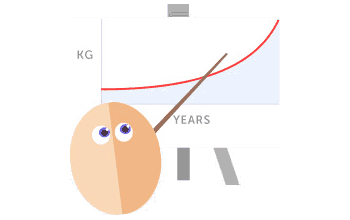"November: predicted loss, 2.8 kg; actual, 4.0 (ratio P:O = 1.43)
December: predicted, 2.1; actual, 3.0 (ratio 1.43)
January: predicted, 2.5; actual, 4.0 (ratio 1.6)
February: predicted, 1.6; actual, 3.75 (ratio 2.3)"
Depends what "Predicted" means. e.g Prospectively on 30/10 for November based on previous history, or retrospectively on 01/12 based on entered data (which may not be accurate)?
But looking at the data
4 - 2.8 = 1.2 Kg
3 - 2.1 = 0.9 Kg
4 - 2.5 = 1.5 Kg
3.75 - 1.6 = 2.15 Kg
Could not a significant part of these variances be just water retention type issues? Leaving relatively small calorific differences that can easily be accounted for by variances in activity (including both 'formal' exercise and other activity).
Perhaps there's a general issue of "limits" and measurement "accuracy"?
e.g If I weighed myself and the scales say it's 240 lbs should this be expressed as 240 +- 0.1 lbs (the scale) but due to the water retention effect we should be quoting 240 +- 2 lbs (so anywhere really between 238 and 242 'really' ), so only when it drops down to 237 is any loss really significant etc etc etc .
December: predicted, 2.1; actual, 3.0 (ratio 1.43)
January: predicted, 2.5; actual, 4.0 (ratio 1.6)
February: predicted, 1.6; actual, 3.75 (ratio 2.3)"
Depends what "Predicted" means. e.g Prospectively on 30/10 for November based on previous history, or retrospectively on 01/12 based on entered data (which may not be accurate)?
But looking at the data
4 - 2.8 = 1.2 Kg
3 - 2.1 = 0.9 Kg
4 - 2.5 = 1.5 Kg
3.75 - 1.6 = 2.15 Kg
Could not a significant part of these variances be just water retention type issues? Leaving relatively small calorific differences that can easily be accounted for by variances in activity (including both 'formal' exercise and other activity).
Perhaps there's a general issue of "limits" and measurement "accuracy"?
e.g If I weighed myself and the scales say it's 240 lbs should this be expressed as 240 +- 0.1 lbs (the scale) but due to the water retention effect we should be quoting 240 +- 2 lbs (so anywhere really between 238 and 242 'really' ), so only when it drops down to 237 is any loss really significant etc etc etc .






